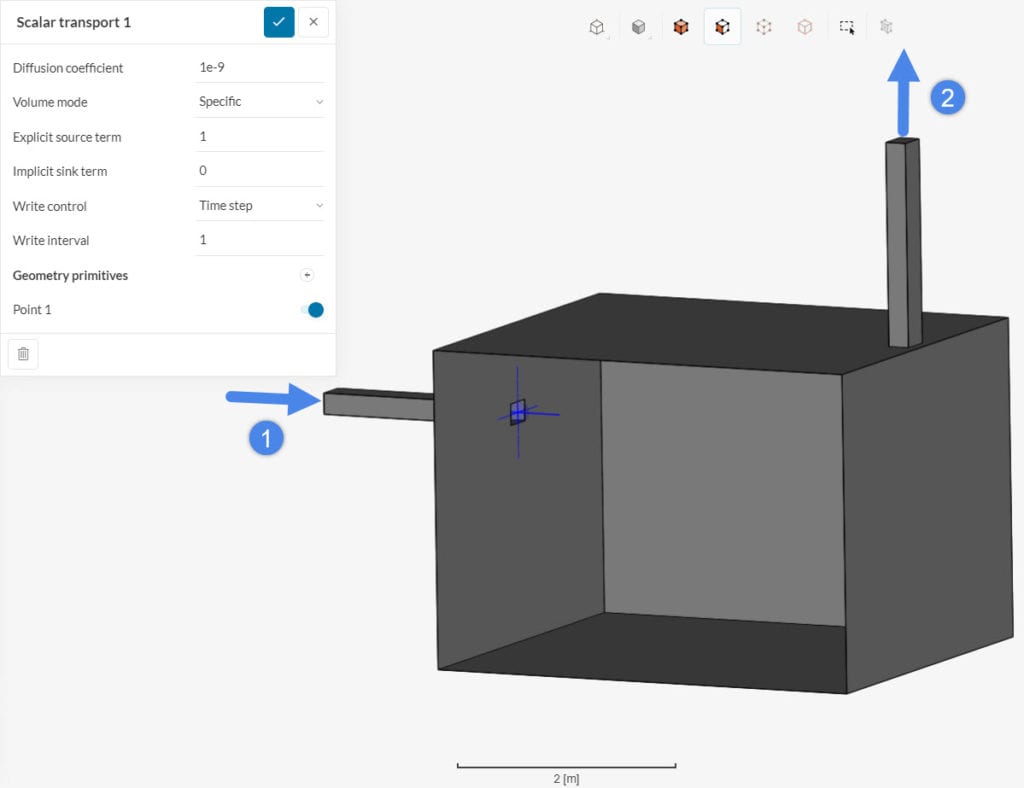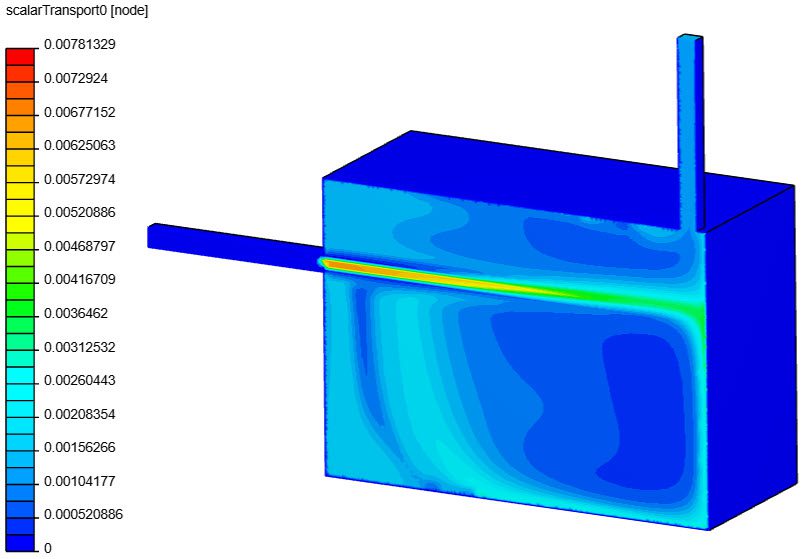Documentation
The Scalar Transport result control item allows you to perform simple passive scalar transport studies. This result control is only available for Incompressible analyses when no passive species are defined under global settings.
This result control item acts as a semi-implicit source term for a scalar named scalarTransport. The user should specify the following parameters:
$$ S = Sp + Su\cdot(scalarTransport) \tag {1}$$
Where \(S\) is the net source term, \(Sp\) is the Explicit source term, \(Su\) is the linearized Implicit sink term, and \(scalarTransport\) is the value of the scalar term locally, where the source is.
In short, equation 1 tells us that the explicit term is a constant source, whereas the implicit term will add/remove scalar based on the current levels of scalar in the domain.
As an example, let’s use the same geometry below, from this mean age of air validation case:

From the image above, the geometry has a single inlet (1) and a single outlet (2). Furthermore, the point primitive close to the inlet will act as a specific explicit source term. The scalar generated by the point primitive is transported across the room via convection and diffusion effects.
In the post-processor, by analyzing the scalarTransport parameter, we can get insights on how the scalar spreads within the computational domain.

Important
The scalarTransport parameter can only be analyzed in the legacy post-processor. Please visit this page to see how to open the legacy post-processor.
Last updated: December 13th, 2022
We appreciate and value your feedback.
Sign up for SimScale
and start simulating now